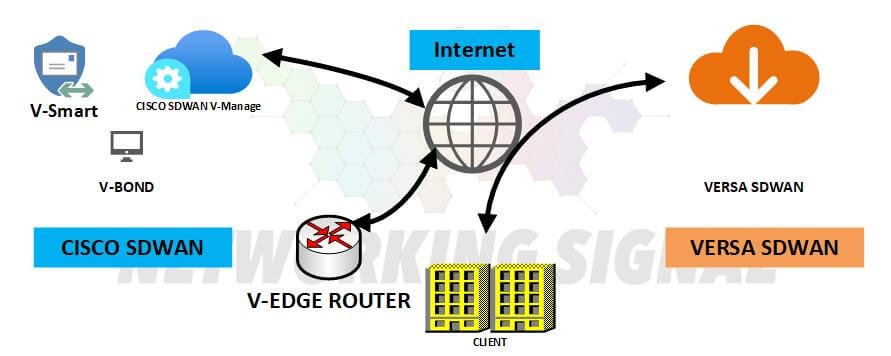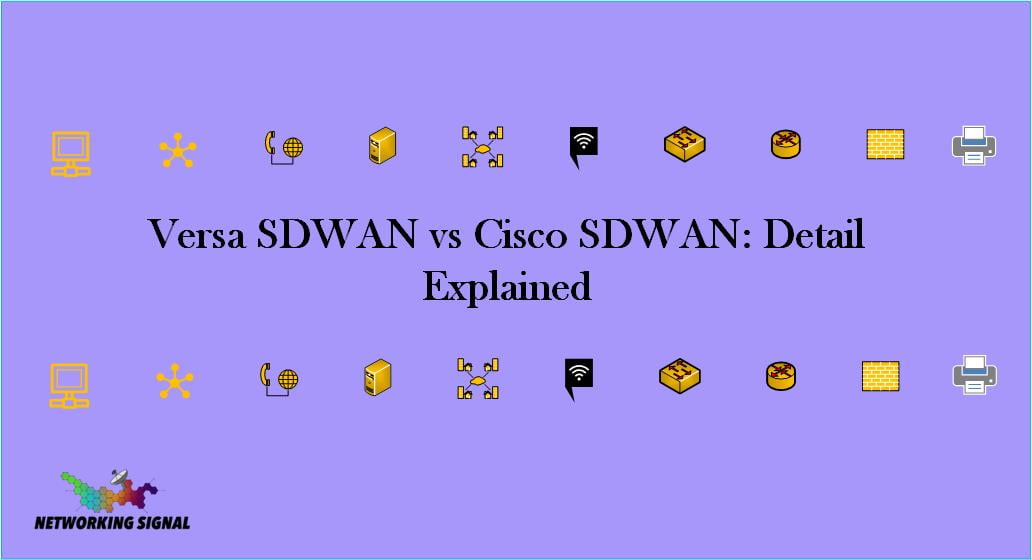What are Versa SD Wan and Cisco?
Versa SD Wan and Cisco are two of the most popular choices for software-defined wide-area networking (SD-WAN). They are both well-suited for enterprise network deployments, offer a variety of features, and have a strong reputation for reliability. Here’s a closer look at each:
Cisco SD Wan
One of the most popular networking vendors, Cisco offers a comprehensive SD-WAN solution that is easy to deploy and manage. It offers a variety of features, including quality of service (QoS), application visibility and control, and WAN optimization. Cisco’s SD-WAN solutions are available in both on-premises and cloud-based deployments.
What Are the Benefits of Cisco SD Wan?
There are many benefits of using Cisco SD Wan, including:
Ease of deployment and management: Cisco’s SD-WAN solutions are easy to deploy and manage, thanks to their intuitive web-based interface.
Quality of service (QoS): Cisco’s QoS features allow you to prioritize traffic based on specific applications or users.
Application visibility and control: Cisco’s application visibility and control features give you granular control over how traffic is routed and prioritized.
WAN optimization: Cisco’s WAN optimization features help to improve performance by reducing latency and jitter.
Versa SD Wan
Versa SD Wan is a relative newcomer to the SD-WAN market, but it has quickly gained popularity due to its flexibility and scalability. Versa’s solutions are available in both on-premises and cloud deployments, and they offer a number of features, including application-aware routing, multi-path optimization, and secure encrypted tunnels.
What Are the Benefits of Versa SD Wan?
There are many benefits of using Versa SD Wan, including:
Flexibility: Versa’s solutions are highly flexible, allowing you to tailor them to your specific needs.
Scalability: Versa’s solutions are easy to scale, so you can add more users or applications as needed.
Application-aware routing: Versa’s application-aware routing feature ensures that traffic is routed optimally, based on the specific needs of your applications.
Multi-path optimization: Versa’s multi-path optimization feature allows you to use multiple Internet links simultaneously for increased reliability and performance.
Secure encrypted tunnels: Versa’s SD-WAN solutions use secure encrypted tunnels to protect your data.
How SDWAN is Important for a Network?
As businesses increasingly rely on cloud-based applications and services, the need for a reliable and high-performance wide-area network (WAN) connection has never been greater. Software-defined wide-area networking (SD-WAN) is a new approach to WAN connectivity that is designed to address the challenges of traditional WANs.
SD-WAN enables businesses to connect their branches and remote locations to the cloud in a more efficient and cost-effective way. It does this by dynamically routing traffic over the best available path, whether that is a private MPLS link, a public Internet connection, or a combination of both. SD-WAN also provides built-in security and quality of service (QoS) features, making it a more attractive option for many businesses.
What is the Difference Between Versa SD Wan and Cisco SD Wan?

When it comes to SD-WAN, there are a few key differences between Versa and Cisco.
- Cisco’s solutions are designed for on-premises deployments, while Versa’s solutions can be deployed in both on-premises and cloud environments. This gives Versa an advantage when it comes to scalability and flexibility.
- Cisco SD-WAN offers a number of features that are not available with Versa, such as quality of service (QoS), application visibility and control, and WAN optimization. However, Versa’s solutions do offer some unique features, such as application-aware routing, multi-path optimization, and secure encrypted tunnels.
- Cisco’s SD-WAN solutions are typically more expensive than Versa’s. This is due in part to Cisco’s reputation as a leading networking vendor, as well as the fact that Cisco’s solutions are designed for on-premises deployments.
Which Is the Right Solution for You?
The right solution for you will depend on your specific needs. If you are looking for a flexible and scalable SD-WAN solution, then Versa SD Wan is a good choice. If you need an easy-to-deploy and manage solution with features like QoS and WAN optimization, then Cisco SD Wan is a good option.
No matter which solution you choose, you can be sure that you are getting a high-quality SD-WAN solution that will meet your needs.


Like cisco sdwan uses OMP protocol between vedge and v smart devices .which protocol uses between versa controller and versa custumer side device .
Difference between versa headent and cisco headent device